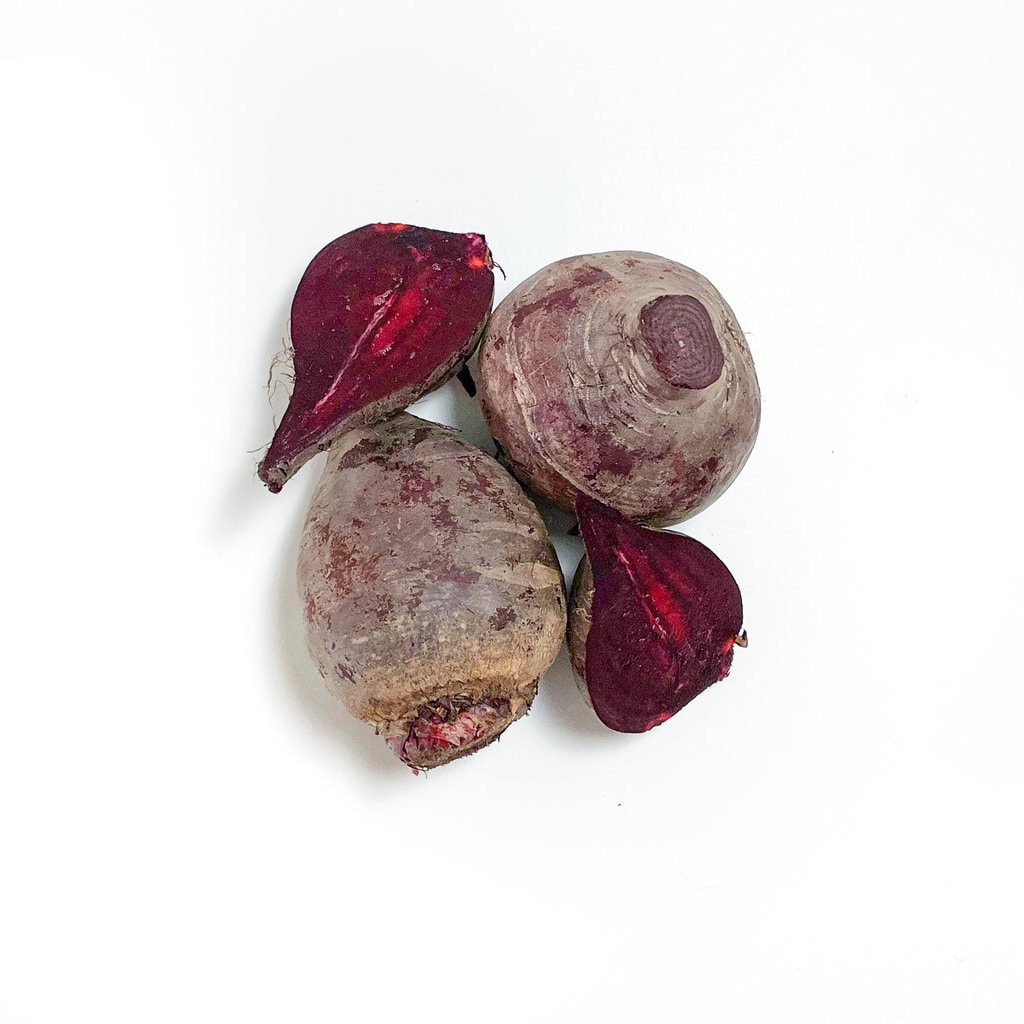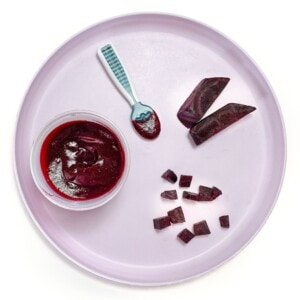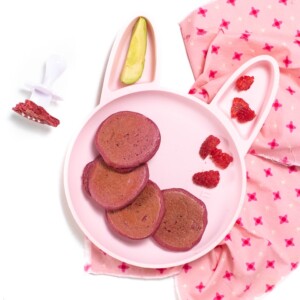Beet Profile

Medically reviewed and cowritten by Jamie Johnson, Registered Dietitian Nutritionist (RDN).
Beet Profile
Beets are very nutritious for your little one. These jewel-toned veggies are packed with calcium, fiber, and Vitamin A, which all play a role in the healthy development of your baby. Beets are also a unique source of phytonutrients called betalains, which have been shown to provide antioxidant, anti-inflammatory, and detoxification support in our bodies. This pretty veggie has also been shown to fight cancer, improve eye health and help protect against heart disease, making it one of the most nutritious veggies on earth. Beets are pleasing to the eye, a fun finger food for baby, and add a fun pop of color and nutritional boost to any puree!
Health Benefits of Beets
Beets may not be at the top of your list of favorite veggies, but it might be worth getting it to the top of your little one’s. Beets are packed with nutrients that can benefit health.
- They are full of fiber, which can help with digestion.
- Their rich color indicates they are an excellent source of antioxidants, which helps with immunity and reducing inflammation.
- Beets are high in compounds called nitrates, which are important for brain health.
- They contain many other important vitamins and minerals, including copper, manganese, folate, potassium, and iron.
Highlighted Nutritional Importance of Beets
Vitamins
Folate – This important B vitamin helps build cells in our bodies and is crucial in making DNA
Vitamin C – helps to form and repair red blood cells, bones and tissues and helps baby’s gums stay healthy.
Vitamin B6 – this vitamin helps to metabolize protein, fats and carbohydrates from the foods we eat and is crucial to your baby’s developing brain and nervous system
Minerals
Potassium – an electrolyte mineral that works with sodium to control water balance and healthy blood pressure
Copper – essential for forming red blood cells and boosts baby’s ability to mend tissues and break down sugars
Magnesium – this mineral keeps bones strong, maintains a healthy heart rhythm, and supports the immune system
Iron – responsible for making hemoglobin in blood (which gives blood it’s red color!), which is oxygen-carrying and helps baby feel alert and energized
Beeturia and What You Should Know
An estimated 10-15% of US adults (and babies!) experience beeturia, or reddening of the urine or stool after consuming red beets. The pigments in red beets are so strong your baby may have pink to reddish poop or urine 1-3 days after consumption, but there is no need to be alarmed as this is a perfectly normal phenomenon.
How to Select and Store Beets for Baby Food
Beets are not one of the Dirty Dozen foods, so purchasing organic is a personal choice.
When selecting fresh beets at your farmers market or grocery store, look for beets about 2″ in diameter that are unblemished and unbruised. When it comes to beets, bigger is not better, and they may not be as tender or tasty as a smaller beet. Beets come in various colors, including red, yellow, purple, and orange. If possible, buy beets with green leafy tops attached so they will stay fresher for longer.
Cut off the greens to store beets and place in an airtight container or baggie. Store them in the crisper drawer of your refrigerator, where they will remain fresh for about a week.
To prepare beets, roasting and steaming is a great option if you prepare them as baby food. These cooking methods make the beets mushy and easy to puree. Removing the beet skin after cooking is a personal choice, but certain tummies may not be able to handle the tough skin.
Beware! Red or purple beets will leave you, your kiddo, and whatever they touch stained a pretty shade of pink. Many people opt for gloves when preparing them and removing all clothes from your baby prior to snack time. If things DO get a bit messy, rubbing a lemon wedge on stained skin can help.





